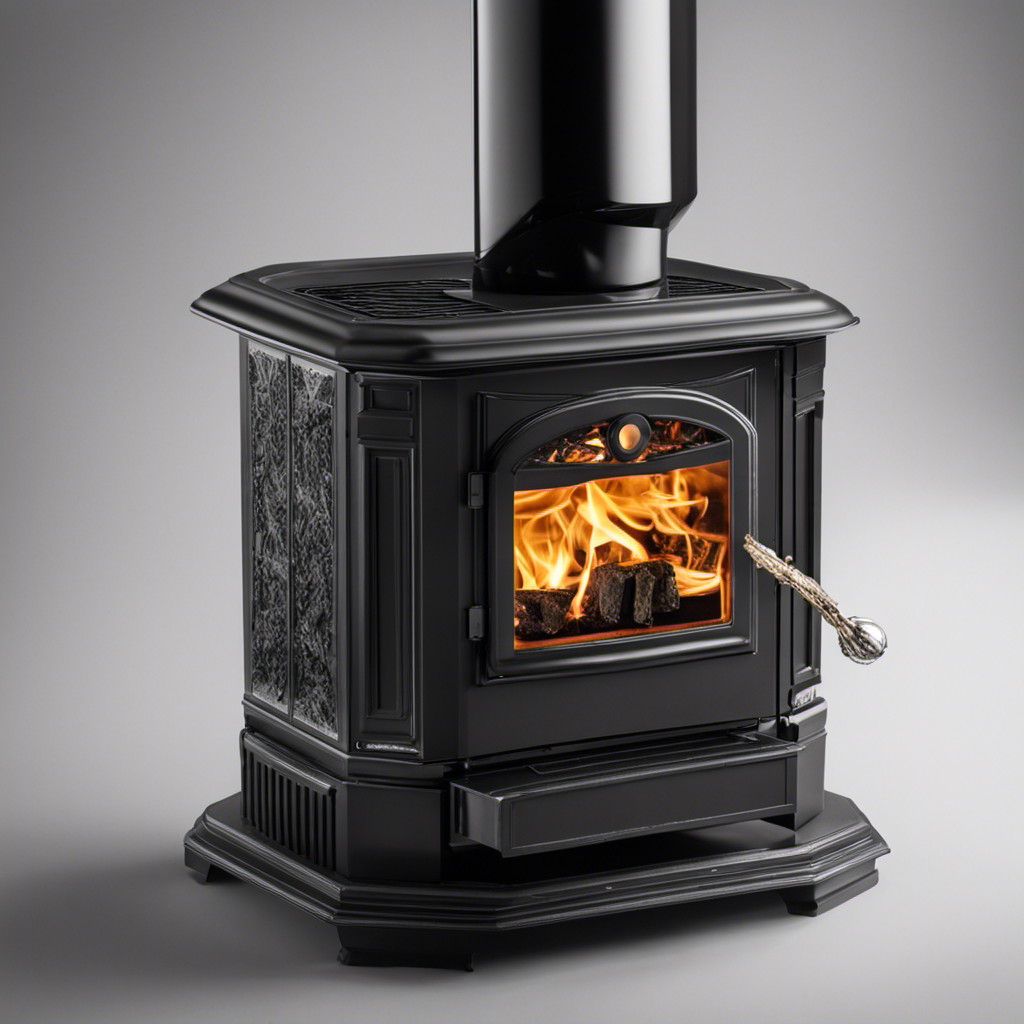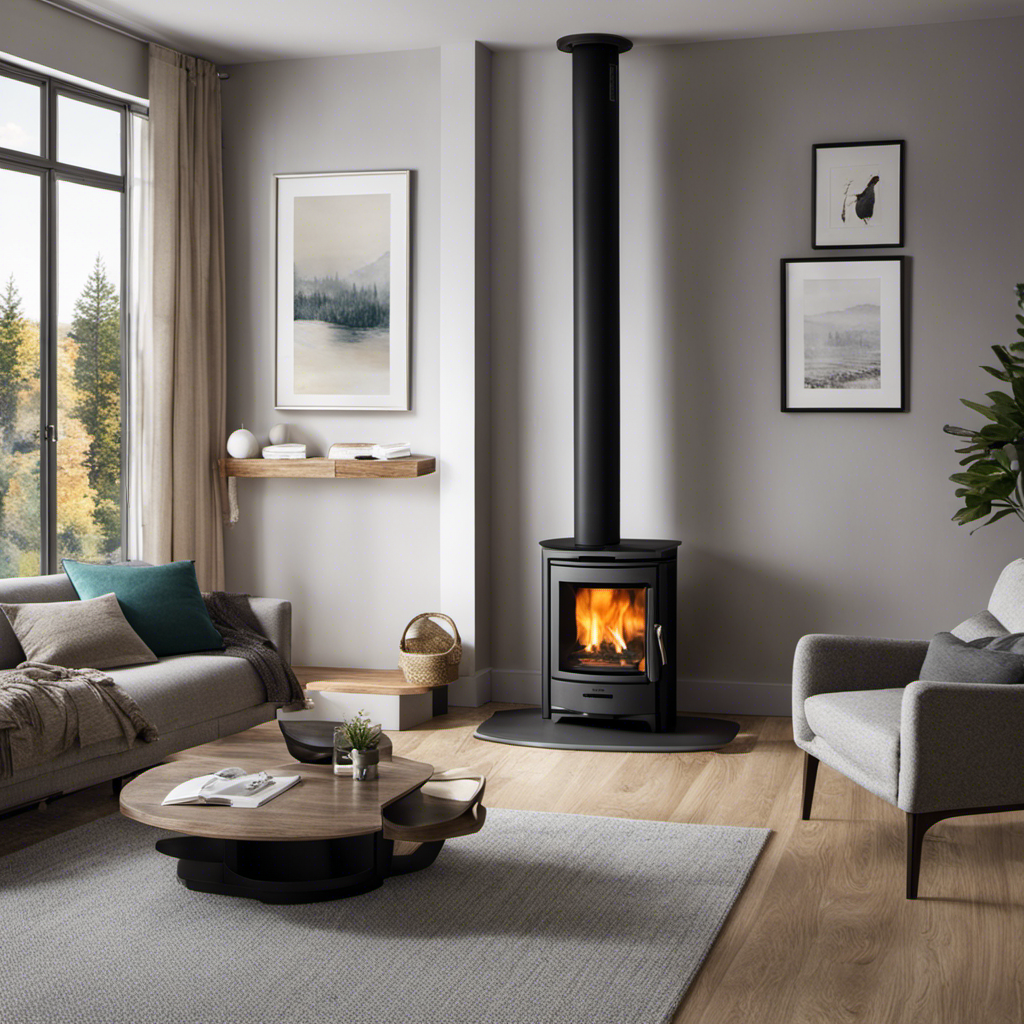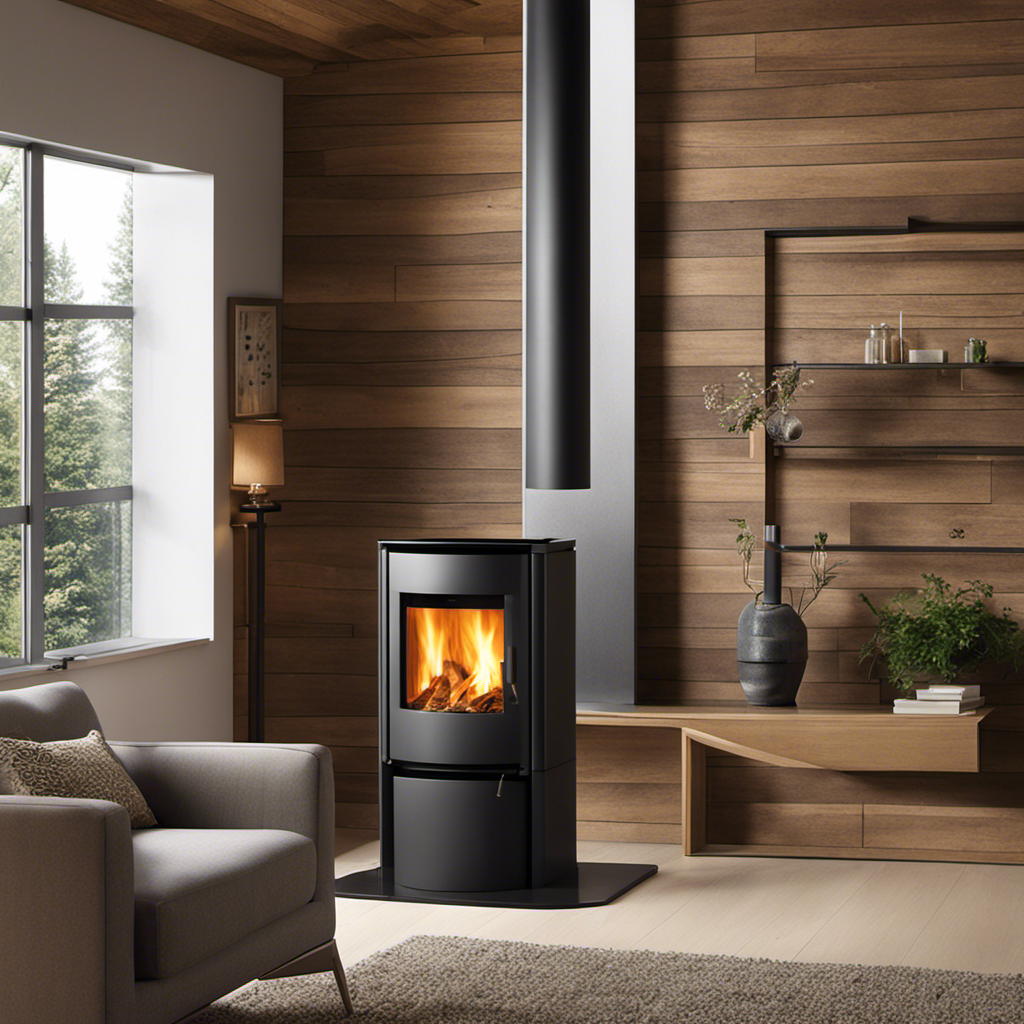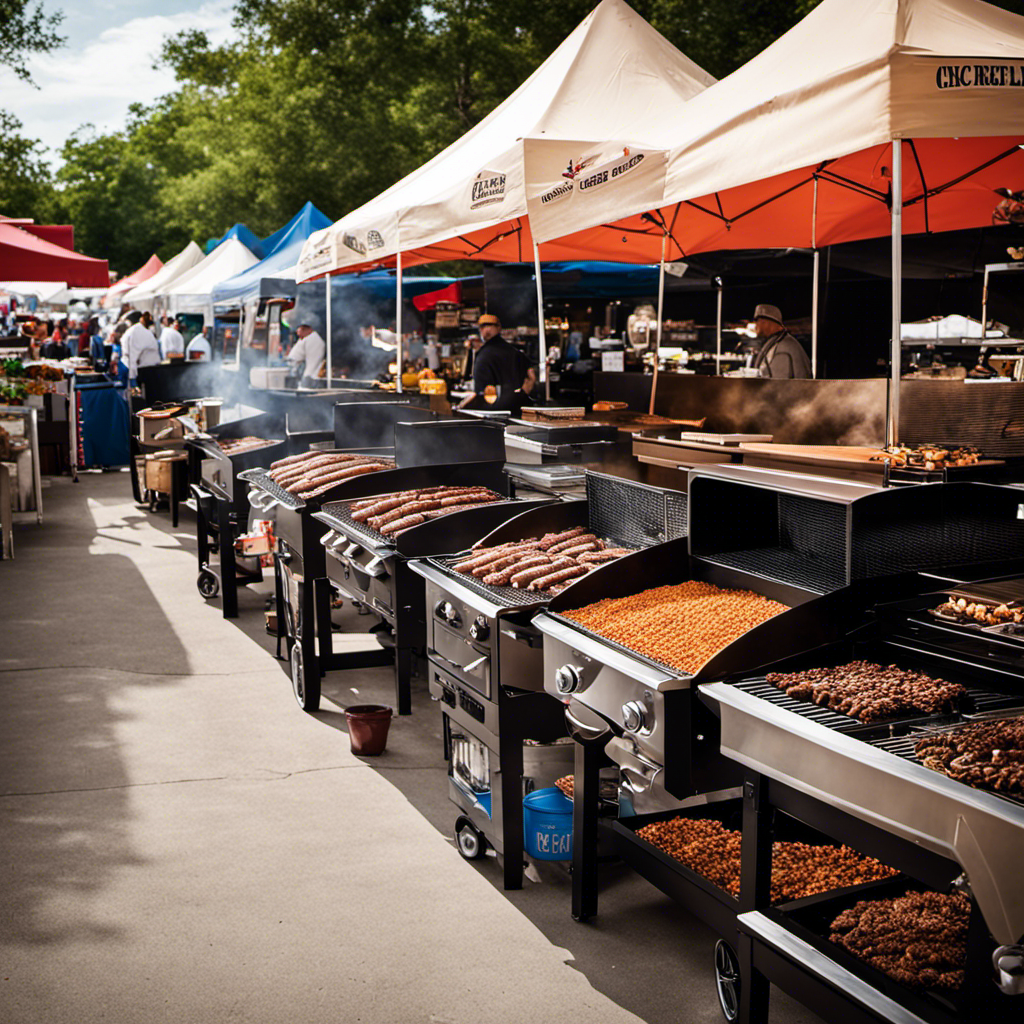Being homeowners, we are instinctively attracted to the warm and inviting charm of pellet stoves. However, have you thought about the perspective of insurance companies on these alternative heating options?
In this article, we delve into the world of insurance companies’ reactions to pellet stove risks. We explore their specific policies, compare them to wood-burning stoves, and discuss the potential impact on insurance rates and coverage.
Join us as we gain valuable insights to help us make informed decisions about our insurance coverage.
Key Takeaways
- Insurance companies may consider a pellet stove an increased risk, leading to higher rates for coverage.
- Wood stoves are usually more expensive to insure compared to pellet stoves due to their higher risk of causing residential fires.
- Clearance from the insurance company is necessary for coverage of damages caused by the stove, and local codes usually require professional installation of wood or pellet stoves.
- Standard homeowners insurance policies provide coverage for damages caused by the stove, but it is important to check with your agent for adequate coverage and any coverage limits for damages caused by appliances.
Insurance Policy Considerations for Pellet Stove Owners
Our insurance policy may need to be reviewed to consider the potential risks associated with owning a pellet stove. Insurance companies often view pellet stoves as an increased risk, which can impact insurance premiums.
It’s important to check with your insurance company to understand their policy on pellet stoves and how it may affect your rates. While some companies may not differentiate between a pellet stove and a regular wood-burning stove, others may have specific guidelines and requirements.
Safety is also a crucial aspect when it comes to pellet stoves. Following safety guidelines for pellet stoves, such as proper installation and clearance requirements, is essential to ensure coverage from the insurance company.
Being knowledgeable about these factors can help you make informed decisions about your insurance coverage and minimize potential risks.
Comparative Insurance Rates: Wood-Burning Vs. Pellet Stoves
When comparing wood-burning and pellet stoves, we found that insurance rates are usually higher for wood stoves due to the increased risk of residential fires. Wood stoves have a higher potential cost when it comes to insurance coverage. This is because wood stoves are more likely to cause residential fires compared to pellet stoves. Insurance companies consider wood stoves to be a greater safety risk, which results in higher premiums.
However, it’s important to note that the increase in insurance rates for having a wood stove is typically less than $100 per year. To mitigate the risk and lower insurance costs, homeowners should take safety precautions such as proper installation, following local codes and clearance requirements, and obtaining clearance from the insurance company. By being aware of these safety measures and adhering to them, homeowners can ensure adequate coverage and potentially reduce insurance expenses.
Factors Behind Increased Insurance Premiums for Stove Owners
As homeowners with a stove, we should be aware that factors such as increased fire risk and potential damages contribute to higher insurance premiums. Insurance companies assess the risk associated with owning a stove and adjust their rates accordingly.
Here are some factors affecting insurance rates for stove owners:
-
Type of stove: Insurance companies may differentiate between wood-burning and pellet stoves, with wood stoves being more expensive to insure.
-
Risk of fire: Stoves, regardless of type, pose an increased risk of fire compared to not having a stove at all.
-
Installation requirements: Local codes often require professional installation and clearance from combustible materials, which can affect insurance coverage.
-
Coverage limits: Damages caused by appliances may have coverage limits, so it’s important to check with your agent for adequate coverage.
-
Insurance company policies: Each insurance company may have different policies regarding stove ownership, so it’s crucial to understand your specific insurer’s guidelines.
Installation Requirements and Regulations for Wood and Pellet Stoves
Installing a wood or pellet stove requires following local codes, which typically mandate professional installation and clearance from combustible materials. These clearance requirements ensure that the stove is installed safely and reduces the risk of fire.
Professional installation is necessary to ensure that the stove is properly installed and meets all safety standards. A professional installer will have the knowledge and experience to properly install the stove and ensure that it’s positioned at the correct distance from combustible materials.
Clearance requirements may vary depending on the type of stove and the local codes. It’s important to consult the manufacturer’s instructions and local codes to determine the specific clearance requirements.
Clearance and Coverage: Insurance Requirements for Stove Owners
By understanding our insurance policy’s requirements for clearance and coverage, we can ensure that our wood or pellet stove is properly installed and protected against potential damages. It’s essential to be aware of the insurance coverage requirements and safety precautions to minimize risks and ensure adequate protection.
To provide a deeper understanding, here are some key considerations regarding insurance coverage for wood and pellet stoves:
- Insurance companies may consider a pellet stove an increased risk, resulting in higher rates for coverage.
- Wood stoves usually have higher insurance premiums compared to pellet stoves due to increased fire risk.
- Code requirements and local regulations must be followed for the proper installation of stoves.
- Clearance from the insurance company is necessary to ensure coverage for damages caused by the stove.
- Standard homeowners insurance policies generally cover damages caused by fire, smoke, and water, but coverage limits may apply.
Being knowledgeable about these insurance requirements and taking necessary safety precautions will help protect our homes and ensure adequate coverage for potential damages.
Homeowners Insurance Coverage for Stove-Related Damages
Understanding our homeowners insurance coverage is crucial to ensure that we’re adequately protected against potential damages caused by our wood or pellet stove.
When it comes to homeowners insurance rates, having a wood or pellet stove in our home may slightly increase our premiums. However, wood stoves are usually more expensive to insure compared to pellet stoves due to the higher risk of residential fires.
It’s important to note that insurance companies may have coverage limitations for damages caused by appliances, including stoves. Therefore, it’s essential to check with our insurance agent to ensure that we’ve adequate coverage for any potential damages caused by our stove.
Evaluating Coverage Limits for Stove-Related Damages
When evaluating our coverage limits for stove-related damages, it’s crucial to consider the potential costs associated with repairs or replacements. As homeowners, we need to be knowledgeable about our insurance policies and understand the potential insurance claims that may arise from stove-related damages. Here are five key points to consider:
- Coverage limits: Review your policy to determine if there are any limitations on the amount of coverage provided for stove-related damages.
- Deductibles: Understand the deductible amount you’d be responsible for in the event of a claim.
- Additional living expenses: Consider the potential costs of temporary housing or accommodations if your home becomes uninhabitable due to stove-related damages.
- Liability coverage: Evaluate whether your policy includes liability coverage in case someone is injured as a result of a stove-related incident.
- Replacement cost coverage: Determine if your policy provides coverage for the full replacement cost of damaged stoves, or if it only covers the actual cash value.
Standard Insurance Policies and Damages Caused by Stoves
When it comes to damages caused by stoves, it’s crucial to understand the coverage provided by standard insurance policies. Homeowners insurance policies typically cover damages caused by fire, smoke, and water, including those caused by stoves. However, it’s important to note that these policies may have coverage limits for damages caused by appliances. Therefore, it’s essential to review your insurance policy and consult with your agent to ensure adequate coverage for stove-related damages.
Insurance policy limits refer to the maximum amount that an insurance company will pay for a covered loss. These limits can vary depending on the specific policy and the type of coverage. It’s crucial to understand your policy limits to avoid any potential gaps in coverage.
In the case of damages caused by stoves, it’s recommended to review your policy limits and consider increasing them if necessary to ensure sufficient protection in the event of a stove-related incident. By having adequate coverage and understanding your insurance policy limits, you can have peace of mind knowing that you’re financially protected against damages caused by stoves.
Understanding the Risk Factors for Insurers With Stove Owners
As homeowners with a stove, it’s important for us to be aware of the factors that insurers consider when determining our risk level. Understanding these risk factors can help us understand the insurance coverage implications and ensure that we’ve adequate coverage. Here are the key points to consider:
- Insurance companies may view pellet stoves as an increased risk, potentially resulting in higher rates for coverage.
- Some insurance companies may not differentiate between pellet stoves and regular wood-burning stoves.
- Checking with our insurance company about their policy on pellet stoves can help us determine if our rates will increase.
Wood-burning stoves are usually more expensive to insure compared to pellet stoves due to a higher risk of residential fires. Proper installation and adherence to code requirements are necessary to obtain coverage for damages caused by the stove.
Understanding these risk assessment factors will help us make informed decisions about our insurance coverage and ensure that we’re adequately protected.
Insurance Companies’ Reaction to the Risks of Pellet Stoves
When it comes to the risks associated with pellet stoves, insurance companies have had to make adjustments in their policies and pricing.
Due to the increased risk of fire, insurance rates for homeowners with pellet stoves may be higher compared to those without.
Safety considerations play a significant role in insurance companies’ reactions to pellet stoves. While modern pellet stoves are designed to be safe, they still pose a higher risk than other heating options.
Insurance companies factor in this risk when determining coverage and pricing.
It’s important for homeowners to check with their insurance company to understand their specific policy on pellet stoves. By doing so, they can determine if their rates will increase and ensure they’ve adequate coverage for any potential damages caused by the stove.
Frequently Asked Questions
Are There Any Discounts Available for Homeowners With Pellet Stoves?
Yes, there may be discounts available for homeowners with pellet stoves.
Some insurance companies offer discounts for certain safety features, such as having a professionally installed pellet stove. These discounts can help offset the higher rates associated with having a pellet stove.
Additionally, pellet stoves typically have lower maintenance costs compared to wood-burning stoves, which can also contribute to potential insurance discounts.
It’s important to check with your insurance company to see if they offer any discounts for homeowners with pellet stoves.
What Steps Can Homeowners Take to Minimize the Fire Risk Associated With Pellet Stoves?
To minimize the fire risk associated with pellet stoves, homeowners can take several steps.
It’s crucial to clean the stove regularly, including the chimney and venting system. Checking for any signs of damage or wear is also important.
Additionally, homeowners should ensure that the stove is installed correctly, following all code requirements and clearance guidelines.
Taking these homeowner responsibilities seriously and following maintenance tips can help reduce the risk of fire and keep insurance rates manageable.
Can Installing Additional Safety Features, Such as Fire Alarms or Carbon Monoxide Detectors, Help Lower Insurance Premiums?
Installing additional safety features, such as fire alarms or carbon monoxide detectors, can potentially lower insurance premiums for homes with pellet stoves. Regular maintenance is also crucial in minimizing fire risks associated with pellet stoves.
When comparing insurance rates for homes with different types of heating systems, it’s important to consider the increased risk and potential damages that come with having a stove. Insurance companies may charge higher premiums for homes with wood-burning or pellet stoves due to the increased fire risk they pose.
Are There Any Specific Requirements or Certifications Needed for Professional Installers of Pellet Stoves?
Specific certification requirements exist for professional installers of pellet stoves. These requirements ensure that installers are knowledgeable about the installation process and adhere to pellet stove safety guidelines. Insurance companies often require clearance from certified installers to provide coverage for pellet stove owners.
These certifications help mitigate the risk of fire and ensure that the installation is done correctly. By following these requirements, homeowners can have peace of mind knowing that their insurance coverage will protect them in case of any damages caused by the pellet stove.
Do Insurance Companies Offer Any Specialized Policies or Coverage Options Specifically for Pellet Stove Owners?
Insurance companies do offer specialized policies and coverage options specifically for pellet stove owners. These options may include coverage for damages caused by the stove, such as fire, smoke, and water damage.
It’s important to check with your insurance company to understand the specific coverage options available for pellet stove owners. Additionally, insurance companies may have different rates and requirements for insuring homes with pellet stoves, so it’s crucial to review your policy and determine if any additional coverage is needed.
Conclusion
In conclusion, understanding how insurance companies approach the risks associated with pellet stoves is crucial for homeowners. By comparing wood-burning and pellet stoves in terms of insurance considerations, evaluating installation requirements, and considering coverage limits, we can make informed decisions about our insurance coverage.
Insurance companies’ reaction to the risks of pellet stoves highlights the importance of ensuring proper installation and following local regulations to mitigate potential damages. By being knowledgeable about these factors, we can protect our homes and secure the coverage we need.











